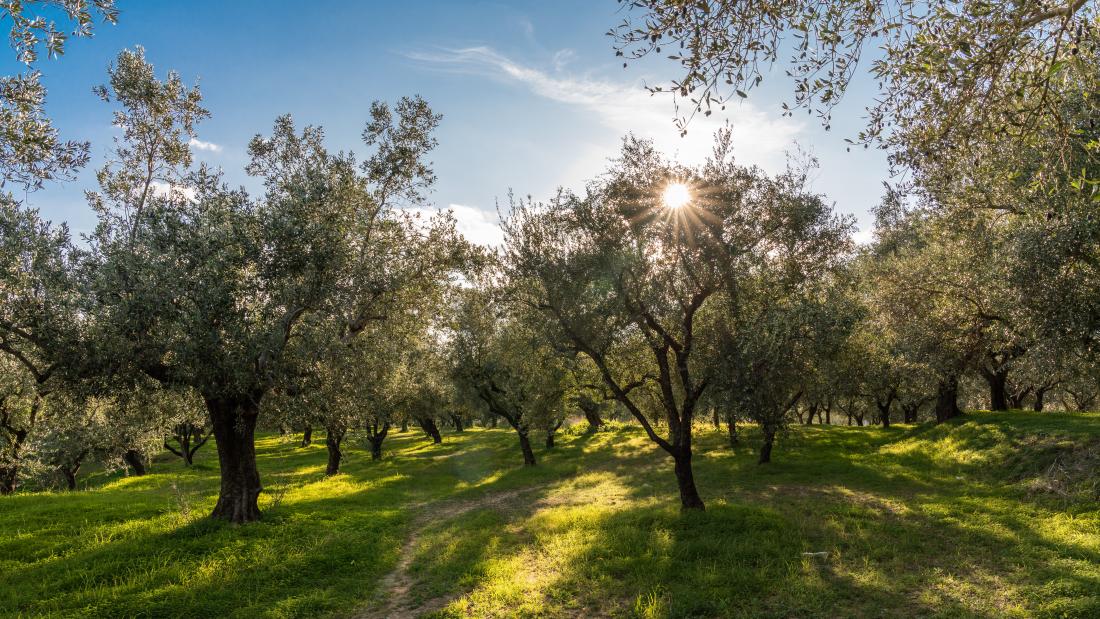ARTOLIO presents: olive tree varieties of Greece

Greece is known worldwide for its beautiful landscapes, rich history, and delicious cuisine, and one of the staples of Greek cuisine is olive oil. It is a product related to the country's idiosyncrasy because it has a mythological value to it. Therefore, not only is it a base for its economy, but also a staple of cultural reference. The country is home to a wide variety of olive tree varieties, each with its own unique flavor profile and particularities. ARTOLIO has two groups of beneficiaries and partners operating in the area, one in Kalamata and another in Thessaloniki.
Here are some of the most popular olive tree varieties in Greece:
-
Koroneiki: The Koroneiki olive tree is one of the most popular olive tree varieties in Greece, and it is grown primarily in the Peloponnese region. It is acknowledged for producing a fruity and slightly bitter oil that is perfect for salads, dips, and other dishes.
-
Kalamata: The Kalamata olive tree is named after the city of Kalamata in the southern Peloponnese region of Greece. It's often used as a table olive and is known for its meaty texture and rich, fruity flavor.
-
Megaritiki: The Megaritiki olive tree is grown in the region of Megara in southern Greece. It produces an oil that is mild, fruity, and slightly sweet, with a hint of bitterness. The Megaritiki olive is also used for table olives, and its flesh is firm and flavorful.
-
Amfissis: The Amfissis olive tree is grown in the Amfissa region of central Greece. It produces a fruity and slightly bitter oil that is often used in Greek salads, dips, and other dishes. The Amfissis olive is also used for table olives, and it is known for its meaty texture and rich, tangy flavor.
-
Throuba: The Throuba olive tree is grown on the island of Thasos in northern Greece. It produces a sweet and fruity oil that is perfect for drizzling over salads or using as a finishing oil for grilled meats and vegetables. The Throuba olive is also used for table olives, and it is known for its firm texture and rich, nutty flavor.
-
Lianolia: The Lianolia olive tree is grown on the island of Corfu in western Greece. It produces an oil that is mild and slightly sweet, with a hint of bitterness. The Lianolia olive is also used for table olives, and it is known for its delicate texture and fruity flavor.
-
Chalkidiki: The Chalkidiki olive tree is grown in the Chalkidiki region of northern Greece. It produces a mild and slightly sweet oil that is often used for cooking and baking. The Chalkidiki olive is also used for table olives. It has a large size and firm texture.
These are just a few of the many olive tree varieties that are grown in Greece. Each variety has its own unique flavor profile and characteristics, and they are used in a wide variety of dishes in Greek cuisine. Olive oil is an important ingredient in Greek cooking, and it is used in everything from salads and dips to sauces, stews, and grilled meats and vegetables.
In addition to its culinary uses, olive oil has been used in Greece for centuries for its health benefits. It is rich in antioxidants and monounsaturated fats, which are believed to reduce the risk of heart disease and other health problems. For instance, one of the ARTOLIO beneficiaries of Thessaloniki, Yannis Prodromou, investigates extra virgin olive oil and its effects against diseases like Alzheimer's.
Also, as mentioned before, olive oil is also an important part of Greek culture because it is often used in religious ceremonies and celebrations. They are considered sacred, and they have been a part of the country's landscape and culture for thousands of years. So much so that, in ancient times, the olive tree became the symbol of Athens.









